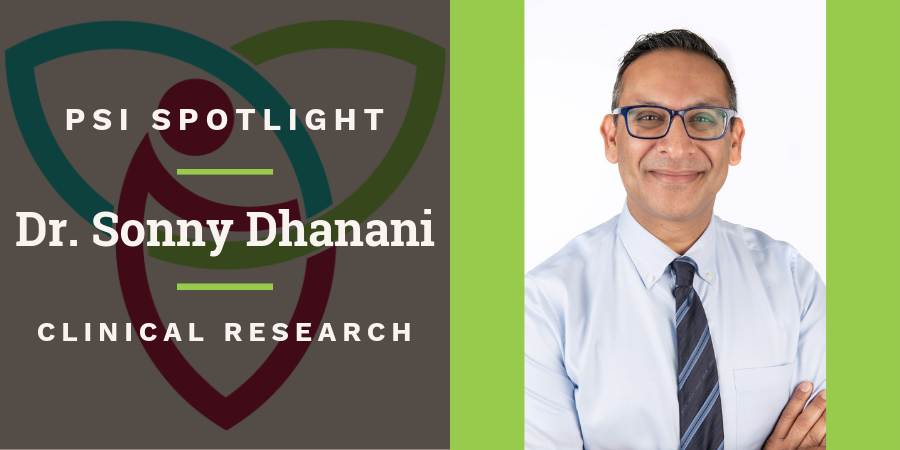“PSI Foundation really looks into the needs of our patients’ and their families and the gaps in our medical practice. At PSI Foundation, where it’s physician-driven, they seem to understand what we want to do, and they understand that these ideas may not be funded elsewhere.” – Dr. Sonny Dhanani
When a new policy came into effect in Canada in 2006 that allowed organ donation after circulatory determination of death, not just neurologic determination, it unlocked the potential for many more organs to be donated. But at the same time, it created confusion in the medical community.
“The community wanted more clarity around the declaration of death related to circulatory death,” says Dr. Sonny Dhanani, an intensive care physician and researcher at the Children’s Hospital of Eastern Ontario. “When circulatory death became a way to donate organs, we needed more evidence about when and how death should be determined.”
He and his team began a small observational study, funded by PSI Foundation, that helped to provide a greater understanding of the process of circulatory death.
But just as importantly, they needed a way to predict how long a patient would live after being withdrawn from life-sustaining therapy. In the case of circulatory death, time is of the essence – organs are only viable to be transplanted for about two hours after withdrawal of life sustaining therapy, as blood flow and oxygen are depleted.
With PSI Foundation funding, Dr. Dhanani and his team looked for ways to predict how long a patient would live after removing life-sustaining therapy, with the goal that patients predicted to die within the two-hour time frame would be the best candidates for organ donation.
In their observational study of 650 patients, the team observed vital signs waveforms starting up to an hour before the patient was removed from life support and continuing up to 24 hours later. By comparing the waveform patterns and the variability of the patterns, they were able to develop a model that predicted how long an individual would live after withdrawal of life support.
They found that their model was as accurate as current clinical assessments, but has the potential to be done more efficiently, automatically and in real time. Ultimately, they hope to put all of the data together – the waveform decision tool, clinical decision tools and physicians’ assessments – to create a comprehensive prediction of whether a patient would be a good donor candidate.
“The situation right now is hard on families and the health care team. A lot of resources are mobilized for people who won’t become donors,” says Dr. Dhanani. “Our predictive tool would be personalized and done in real time, which helps to inform families about the dying process and allows the health care team to have more confidence when approaching potential families about organ donation.”
While it may seem difficult to engage families in this type of research, Dr. Dhanani and his team have always prioritized family engagement in their research, and in fact, they found high rates of participation in their studies. In their pilot study, more than 90% of the families approached consented to participate, much higher than other for other studies involving the ICU.
“If it’s felt that someone won’t die in the appropriate time frame, families aren’t even being approached to discuss donation,” says Dr. Dhanani. “That’s a missed opportunity. Our tool would help to ensure that this doesn’t occur. Everyone should have the opportunity to be a donor.”



